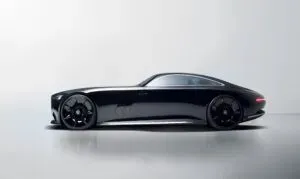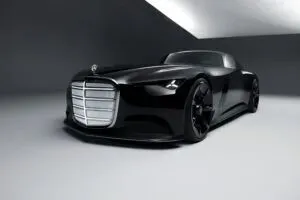
The Vision Iconic is a long-bodied vehicle with rear-wheel drive. It uses steer-by-wire technology to send steering inputs electrically via control units and actuators to the rear axle steering systems, reducing steering effort needed for manoeuvring and parking.
The logical next development step, says the company, would be to prepare the Vision Iconic with a Level 4 automated driving system.
A photovoltaic-active surface, Solar Paint, “similar to a wafer-thin paste”, has been applied to the vehicle’s body to garner extra energy to extend driving range. Mercedes-Benz estimates that a mid-sized SUV could produce up to 7,450 additional miles of range per year, depending on conditions.
Looking further ahead, Mercedes-Benz is researching artificial neural networks for use in vehicle’s safety systems to recognise traffic signs and conditions and for quick reactions and system adjustments. It says neuromorphic computing has the potential to reduce the energy requirements for data processing in automated driving by 90% compared to today’s systems.
The super-sized radiator grill, which has integrated contour lighting, was first introduced for the GLC electric model. Mercedes-Benz said that automated driving will mean that the role of a car’s interior is evolving and predicts “lounge-like comfort” with “hyper-analogue and digital luxury”. Illustrating this, the Vision Iconic’s interior draws on Art Deco influences with velvet covered bench seating lots of chrome and glass and a ‘Zepplin floating glass’ panel of analogue and digital instruments.
“The Vision Iconic embodies our vision for the future of mobility,” said Markus Schäfer, CTO, development and procurement and board member of Mercedes‑Benz Group.
Mercedes claims long distance electric car record







